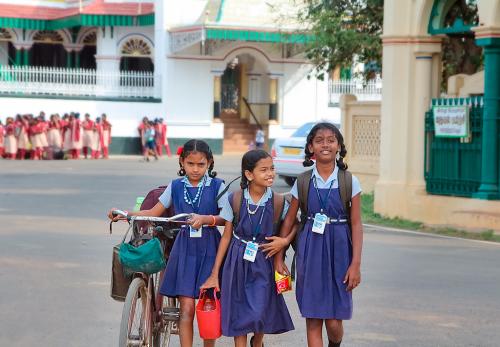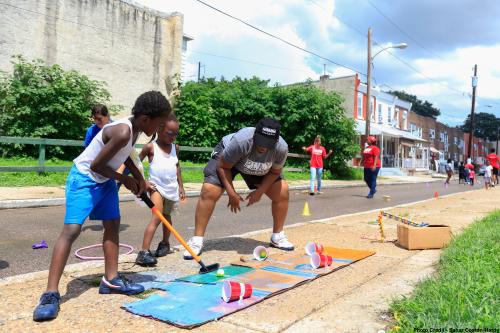With protests in places as disparate as Paris, Beirut, and Santiago, 2019 saw civil unrest around the world. The role of education in building more democratic societies and informed citizens capable of reaching their full potential, while always important, has never been more critical in a time rife with inequality and discord.
As yet another year comes to a close, we at the Center for Universal Education (CUE) reflect on seven key education trends and themes that give us hope for a more prosperous future in the next decade. These seven themes and trends, listed in no particular order, draw on research from both inside CUE and external colleagues.
1. The potential of civic education to develop citizens. Startlingly, the OECD found that, on average globally, approximately nine out of 10 15-year-old students can’t tell the difference between fact and opinion. Civic engagement groups are taking note of this worrying trend and have launched coalitions to teach youth digital literacy, civility, and community engagement to foster good around the world; books with lessons on the history of education and democracy; and campaigns to recommit to democratic, nonpartisan values and institutions.
2. Rethinking the education workforce. Teacher quality is a key determinant of student success, but teachers are undersupported and in short supply, particularly in certain regions such as sub-Saharan Africa. Two marquee reports that published this year—“Learning to leapfrog: Innovative pedagogies to transform education” and “Transforming the education workforce: Learning teams for a learning generation”—consider how to widen the pool of individuals who are considered educators, with an aim of unburdening teachers from administrative tasks and creating a broader education workforce.
3. Innovative ways to measure student learning. To help students thrive in the 21st century, a broader definition of learning and skills is needed. To this end, the World Bank, in coordination with the UNESCO Institute for statistics, announced the Learning Poverty target, the goal that all children should be able to read by age 10. In addition, with support from CUE, countries in Africa and Asia are developing new ways to learn and assess 21st century skills such as creativity and problem-solving to ensure that all children have the breadth of skills needed to reach their full potential and thrive in our rapidly changing world.
4. Blending urban and child development. Children spend a full 80 percent of their waking hours outside of school, and cross-disciplinary solutions to better take advantage of this time in urban areas are growing in popularity. Brookings launched the Playful Learning Landscapes initiative and gained new expertise through the appointment of Fellow Helen Shwe Hadani. Large-scale events, such as the Conscious Cities Festival in NYC and the Urban95 festival in Rotterdam, contemplated how to transform public spaces into playful learning opportunities.
5. Scaling quality education to increase impact. Scaling quality education programs doesn’t happen automatically—rather, it requires deliberation and strategy from the start. With the launch of numerous Real-time Scaling Labs (applied research projects to learn from, document, and support education initiatives as they scale) by CUE and partners around the globe, and reports considering how to pay for education outcomes at scale in places like India, expanding and deepening the impact of small-scale initiatives was a priority focus.
6. Preparing for a changing work environment. While robots are unlikely to wholly replace workers, concerns about technological advancements eliminating jobs in some industries while expanding others abound. The “World Development Report 2019: The Changing Nature of Work” found these fears to be largely unfounded, but other reports offer guidance on industrial development strategies to grow “good” jobs and to upgrade low-wage workers’ career prospects.
7. Leaving no learners behind. Ambitious Sustainable Development Goal (SDG) 4 has been around for years, but outside-the-box thinking is needed it if we are to achieve it by the target date of 2030. Whether looking at a country’s investment in girls’ education and rights or how a “leapfrog” mindset can help the most marginalized students catch up to the learning levels of today’s highest achievers, ensuring no one is left behind must remain high on the agenda over the next 10 years.
Looking ahead into the new year and next decade, we are hopeful that progress in these seven areas continues. We look forward to collaborating with colleagues across Brookings and around the world to help create a more just, equitable society where everyone can develop the full breadth of skills needed to lead healthy, productive lives.








Commentary
Top 7 global education themes in 2019
December 20, 2019